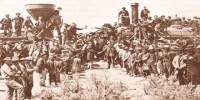Entrepreneurship refers to the organizing factor in the process of production. It embraces activities of entrepreneurs relating to such economic decisions as what to produce, how much to produce and what method of production to adopt. Within the sole proprietor firms, the entrepreneur accepts the financial risk of the enterprise and is solely responsible for its management. But in a public company, these two functions are divided between shareholders.
The entrepreneurial history of Bangladesh dates back to the ancient era. In the ancient, age, Bengal was rich in different small and cottage industries as well as trade and commerce. The basic industries were fine cotton fabric known as muslin, sugar, salt etc. These were exportable commodities for which there was a great demand in the Far East and Europe. With the establishment of Muslim rule in India, the communication system between different regions of India with Bengal developed. As a result, local industries flourished. The Arabs became involved in many businesses’ and linked them up with the West. These people rapidly merged with the local people and contributed a lot in the development of small and cottage industries and of entrepreneurship.
During Pre-Mughal Muslim rule, an entrepreneur class grew in Bengal, especially in and around Dhaka. They had lofty craftsmanship in handicraft, textile weaving, milk products, jewellery etc. The shilling of the capital from Rajmahal to Dhaka during the Mughal period increased the political importance of this region. Dhaka attained greater commercial importance and became a major trading and entrepreneurial centre for the whole of Southeast Asia. The Europeans, particularly the Portuguese, Dutch, English and French as well as other traders began to come in larger numbers. The weaving of muslin received fresh stimulus from the Mughal emperors in Delhi and reached its peak of prosperity. Besides Muslin, the Jamdani saris woven in flowered or plain designs with border and ground in threads of gold, silver or silk became popular and were sent to Hejaj, Morocco, Tunisia, Delhi etc. The other major industries that developed during this period were the gold and silver smithy, making of combs and buttons from animal bones, making of conch-bracelet from a shell, treatment of raw hides and papermaking.
British rule in India, however, introduced a new phenomenon in entrepreneurial activities. The British forced the entrepreneurs to produce whatever they needed at home to sell at lower prices. This had a negative impact on the growth of entrepreneurship in this part of the world. The situation became worse after the Industrial Revolution in England and was further aggravated by the opening of the Suez Canal enabling sea voyage from Britain to India in twenty-five days instead of one hundred days via the Cape route. British import policy changed from importing finished goods from Bengal to importing raw materials at the cheapest possible price and re-exporting finished goods to Bengal and other parts of India. British traders made high profits by exploiting the local entrepreneurs through buying raw materials at cheaper prices and also squeezed them out of the market by creating unequal competition from high-quality industrial products. In addition, the British government had imposed high taxes on the incomes of local entrepreneurs. The Muslim majority of Bengal inclined to disassociate themselves from the British because of the perception that the British had snatched power from the Muslims. The British also disliked Muslims and tried to deprive them of all economic and political opportunities. All these factors deterred the growth of entrepreneurship in Bengal during British rule.
The gap in entrepreneurship developed as a result of thinned participation of the Bengali people in trade and industry was filled up by people coming mostly from the western and southern parts of India. But their efforts were mostly concentrated in Calcutta and its neighbourhood and most of whatever entrepreneurial development took place were concentrated in areas outside the present area of Bangladesh.
During the latter half of the nineteenth century, Bengali capital was mostly diverted to the land and non-commercial occupation. At the same time, development of transportation, primarily the expansion of railway and shipping as well as the expansion of a money economy caused a rise in the price of land, making landed investments more attractive. Most of the salary surpluses of Bengali professionals and officials were invested in land. Such a re-orientation in the pattern of investment adversely impacted on the development of entrepreneurship. Lack of capital was another the disadvantage in the way of entry of prospective Bengali entrepreneurs into had not yet developed, the only two options left open to prospective Bengali borrow were to raise the start-up capital from the existing capital market or to borrow from the informal credit market. At that time, the capital was not developed and entrepreneurs reigned supreme as the principal source of informal capital, but the Bengali entrepreneurs did not get the required credit support from them. Attitudinal problems such as an anti-entrepreneurial bias also played a not too inconsequential role in the development of Bengali entrepreneurship.
















